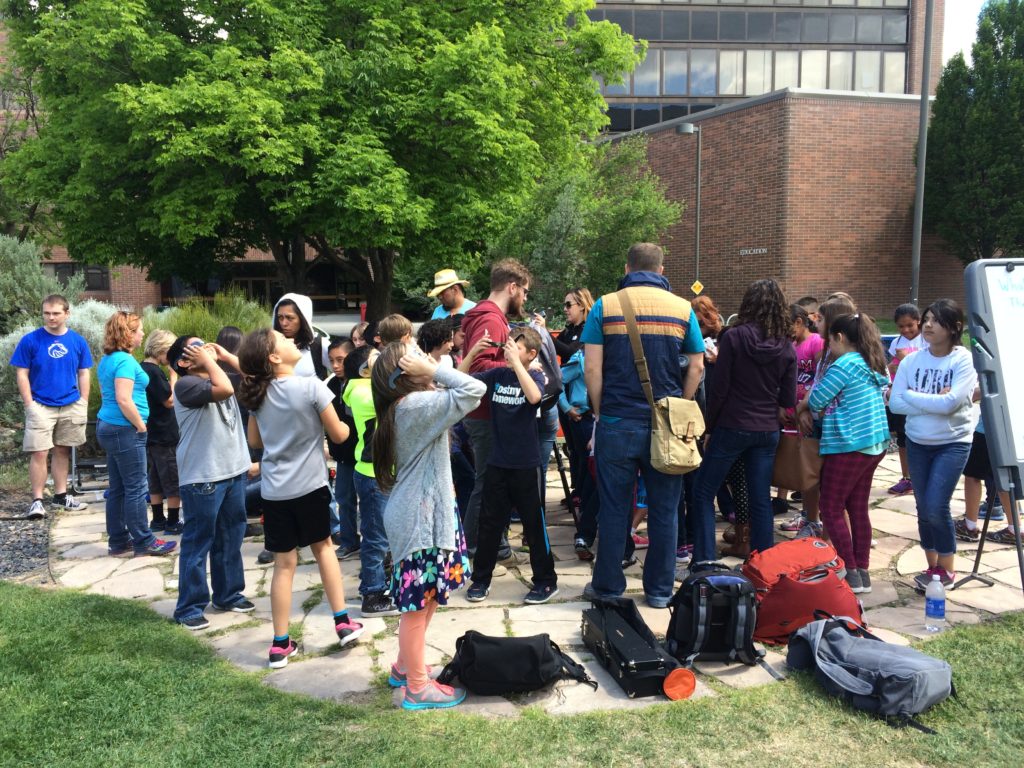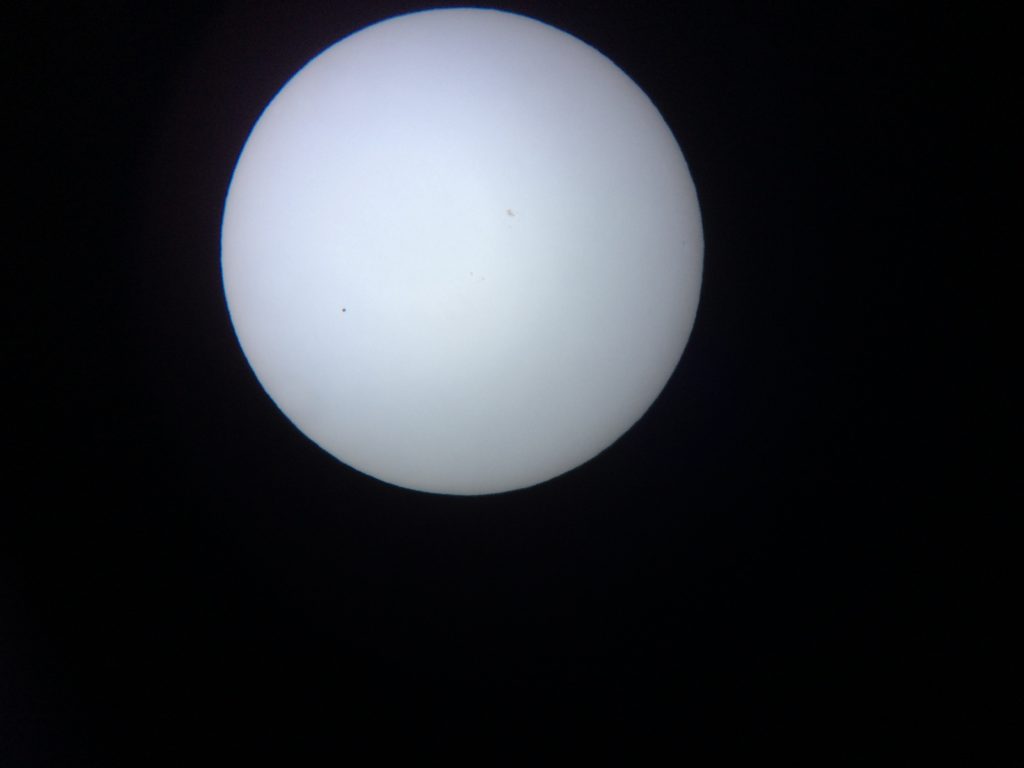An event that only occurs 13 times a century, the planet Mercury will transit the Sun in the morning of May 9, meaning the planet will pass between the Earth and Sun and cast a shadow we can see, as in the photo at left.
The Physics Department at Boise State University will host a viewing event on campus in the plaza next to the physics building (Multi-Purpose Classroom Building) from 9am till 1pm. Paid parking is available in the Brady Parking Garage across the street from the event.
We will have telescopes with Sun-safe filters and eclipse shades to share so the public can watch this rare celestial occurrence.
Here in the Pacific Northwest, the transit will already have begun by the time the Sun rises, but it will last until about 1pm.
So bring the whole family for this rare celestial event — the next one won’t happen until 2019.
UPDATE: We will also project a live feed from NASA’s Solar Dynamics Observatory in the lobby of the Physics Building.
 We also had a local television news crew there from KTVB and Frankie Barnhill and Adam Cotterell of the local NPR station, KBSX.
We also had a local television news crew there from KTVB and Frankie Barnhill and Adam Cotterell of the local NPR station, KBSX.

